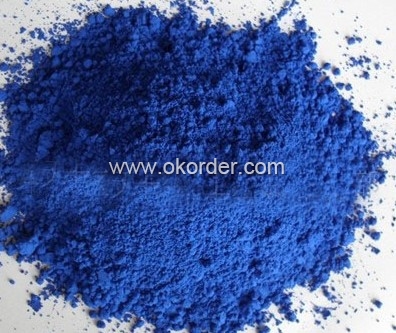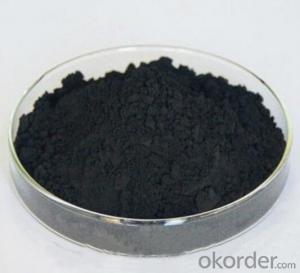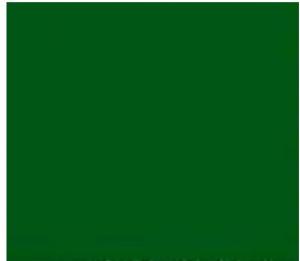Ultramarine Blue For Pigment (462, 465)
- Loading Port:
- Shanghai Port
- Payment Terms:
- TT or LC
- Min Order Qty:
- 1 Metric Ton m.t.
- Supply Capability:
- 8000MT Per Year m.t./month
OKorder Service Pledge
OKorder Financial Service
You Might Also Like
Particular description Of Ultramarine Blue Laundry Grade :
alias:Sodium Alumino Sulphosilicate
ultramarine blue laundry grade Chemical
properties:Formula: Na6Al4Si6S4O20
Molecular weight: 862.60578
ultramarine blue laundry grade Physical
properties:Non-Toxic, it is a safe pigment,Good ability for heat resistance,Light and weather resistance.
Excellent dispersibility.Non-migrate.
Other tech indexs:
Index Name | Index | Result | |
1 | Colour (Compared with standard sample) | Conform | yes |
2 | Tinting Strength % (Compared with standard sample) | 100+5 | 102 |
3 | Solute in Water % ≤ | 0.2 | 0.14% |
4 | Free Sulfur % ≤ | 0.05 | 0.035% |
5 | Moisture (100+2°C) % ≤ | 1.0 | 0.45% |
6 | Sieve Residue(325 mesh) % ≤ | 0.1 | 0.07% |
7 | Oil Absorption % | 25-45 | 33 |
8 | Organic Tinting Material | None | |
9 | PH Value | 8 - 10 | 8.5 |
Ultramarine blue laundry grade Usage:
Ultramarine Blue, PB(Pigment Blue) , is an inorganic pigments color. It is a sodium alumino-sulphosilicate. This pigment is the synthetic form of Lazurite. Compared with other blue pigment or dyes,ultramarine blue has the advantages of clean and bright reddish blue shade.
Ultramarin blue laundry grade Storage:
1.Be set to cool.dry and ventilated place .away from Fire source .
2. Sealed,Prevent from rain .sunlight and strong acis or alkali.
3.Lightly transport and protect from package damage.
Ultramarine blue laundry grade Packing:
25kgs / kraft paper bag(or as your requirements )



- Q: Why do plants contain so many pigments?
- Typically most plants only contain chlorophyll which is green. Which plants are you referring to?
- Q: i need pigment in powdered form and i need it to be oil based for my resin project. i was thinking about just crushing up artist oil pastels but i need it to be really fine with no chunks. sooo, i was wondering if anyone sells really fine oil based art pigment powders in a variety of colors. or do you know of i way i could crush up the pastels super fine so it will mix evenly into the resin? (i hope this made sence, i don't know much about art lol)thanks!!!:)
- Hi. okorder /... Those are all pure pigments, no hues or imitations. The prices may seem high, but even a half a pound of pigment is a huge amount. Prices I've seen on other sites are higher. I do not think it will work to crush up pastels, oil or otherwise, because they already have a binder and probably a lot of filler in them -- you will get a very weak color. Hope this helps.
- Q: can the pigment know as Chinese purple form a matter wave in certain circumstances?
- Peaceful demonstrations, which are the sorts urge by governments, are just a way of letting the public let off steam safely without achieving anything. It is most convenient for them - every one has a jolly time, a bit of bantering, and we all go back to the status quo. Just like the House, a lot of empty debates, and the government just goes ahead and does what it wants. The public is beginning to become aware of the severe limitations of democracy as it is practised in the west. There are times, as the government claims, it has to do what has to be done, even though the actions may be 'unpopular', meaning they are not supported by the majority, and therefore undemocratic. Thus, we have supposedly democratic governments doing undemocratic things (and we accuse other countries with different systems of being undemocratic!). In such situations where democratic governments are acting undemocratically, the public surely has a right to resort to actions other than the ballot box (denied them anyway), or futile gestures. The government is supposed to represent majority will in our system; where it ceases to do so, it has lost its mandate, and, should arguable be replaced before the election comes round.
- Q: What is the difference between a pigmented eyeshadow and a non - pigmented one?
- A believe a pigmented eye shadow will show up more vividly.
- Q: are photosynthetic pigments separated based on their polarity or based on their molecular structure?Thanks
- Molecular structure... Chlorophylls are greenish pigments which contain a porphyrin ring. This is a stable ring-shaped molecule around which electrons are free to migrate. There are several kinds of chlorophyll, the most important being chlorophyll a. This is the molecule which makes photosynthesis possible, by passing its energized electrons on to molecules which will manufacture sugars. All plants, algae, and cyanobacteria which photosynthesize contain chlorophyll a. A second kind of chlorophyll is chlorophyll b, which occurs only in green algae and in the plants. A third form of chlorophyll which is common is (not surprisingly) called chlorophyll c, and is found only in the photosynthetic members of the Chromista as well as the dinoflagellates. The differences between the chlorophylls of these major groups was one of the first clues that they were not as closely related as previously thought. Carotenoids are usually red, orange, or yellow pigments, and include the familiar compound carotene, which gives carrots their color. These compounds are composed of two small six-carbon rings connected by a chain of carbon atoms. As a result, they do not dissolve in water, and must be attached to membranes within the cell. Carotenoids cannot transfer sunlight energy directly to the photosynthetic pathway, but must pass their absorbed energy to chlorophyll. For this reason, they are called accessory pigments. One very visible accessory pigment is fucoxanthin the brown pigment which colors kelps and other brown algae as well as the diatoms.
- Q: Explain why plants need a variety of pigments to carry out photosynthesis?
- It is particularly obvious in seaweeds. The pigment employed by the plant will vary according to the light available, so that seaweeds in shallow water tend to be green but those from deeper water are brown and then, where light levels are really low, seaweeds are red. In most of these cases photosynthesis is still carried out by chlorophyll but the associated pigments help with the absorption of the available light.
- Q: ive been watching a lot of makeup videos on youtube and a lot of the girls use mac pigments. what exactly are they and how are they different from regular eyeshadow? are they easier or more difficult to use?
- Pigment okorder /....
- Q: how to prepare coloured pigments?
- Chemically, pigments fall into a number of large groups, but these are often arbitrarily divided into two major groups. The first group comprises pigments that contain nitrogen; it includes hemoglobins, chlorophylls, bile pigments, and dark-colored pigments called melanin, widespread in many animal groups and the chemical that is responsible for variations in the color of human skin. Related to melanins are the indigoids, of which the well known plant pigment indigo is an example. Riboflavin, which is also known as vitamin B12, is one of a number of pale yellow to green pigments that are produced by several plant groups. The second group is formed of pigments without nitrogen. Carotenoids are members of this group, as are the important plant pigments called flavonoids. In leaves, flavonoids selectively admit light wavelengths that are important to photosynthesis, while blocking out ultraviolet light, which is destructive to cell nuclei and proteins. Flavonoids are also important in flower color, in particular providing red and blue pigments. Bright fall colors are produced by the conversion of colorless flavonoids, called flavonols, into colored forms, called anthocyanins. Quinones provide many yellow, red, and orange pigments, including several useful dyes derived from insects that feed on plants containing the quinones. Cochineal, for example, is a red pigment obtained from the fat cells of scale insects that feed on cactus plants.
- Q: how exactly do pigments work? i know that they absorb every color except the one that we see, but what are the exact physics or whatever behind the selective absorption of the light?
- Different pigments mostly absorb different range at different wavelength of light, but plant -as I know- mostly containing chlorophyll does not absorb green light so we see plants as green.
1. Manufacturer Overview
| Location | Hunan, China |
| Year Established | 1998 |
| Annual Output Value | Above US$ 30 Million |
| Main Markets | 20.00% North America 15.00% South America 15.00% Eastern Europe 10.00% Southeast Asia 10.00% Northern Europe 10.00% South Asia 10.00% Western Europe 5.00% Africa 5.00% Mid East |
| Company Certifications | ISO9001:2000; |
2. Manufacturer Certificates
| a) Certification Name | |
| Range | |
| Reference | |
| Validity Period |
3. Manufacturer Capability
| a) Trade Capacity | |
| Nearest Port | Shanghai Port |
| Export Percentage | 41% - 50% |
| No.of Employees in Trade Department | 6-10 People |
| Language Spoken: | English; Chinese; |
| b) Factory Information | |
| Factory Size: | Above 10,000 square meters |
| No. of Production Lines | Above 10 |
| Contract Manufacturing | Design Service Offered; Buyer Label Offered |
| Product Price Range | High; Average |
Send your message to us
Ultramarine Blue For Pigment (462, 465)
- Loading Port:
- Shanghai Port
- Payment Terms:
- TT or LC
- Min Order Qty:
- 1 Metric Ton m.t.
- Supply Capability:
- 8000MT Per Year m.t./month
OKorder Service Pledge
OKorder Financial Service
Similar products
Hot products
Hot Searches
Related keywords






















